
Lost Circus
Project Breakdown
For my last project at AIE, I was put in Team Quail, a group of 10 other bright and eager game developers ready to create a truly memorable project.
And for this project, there were no restrictions. We had 5 months to create whatever we wanted.

Summary
Project Details
Time Frame: 30 work days (Mar - July 2021)
Team Size: 11 (1 Producer, 3 Designers, 4 Artists, 2 programmers)
My Roles
-
Level Design
-
Designed main and tutorial levels
-
Iterated on level concepts based on mechanical project restrictions and feedback
-
Organized rooms and objects
-
Managed object hierarchy to perform with gameplay mechanics
-
Created prefabs
-
Imported art assets
-
-
Collaboration
- Playtested and held playtesting sessions based on level iterations
-
Participated in Scrum framework and daily standups
-
Worked with mechanics designer and programmers to tweak game mechanics based on playtesting
-
Logged and kept track of work done via Hack n' Plan
-
Created minor functionality scripts
-
Recorded minor sound effects
-
Uploaded work via Perforce
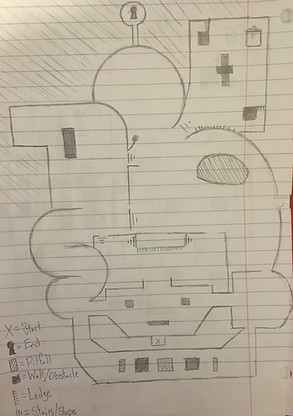

From this...
...to this!
Planning
After being set to our own devices, Team Quail piled together game ideas from every member and voted on our favorite ideas. We decided on a 3rd-person horror game (that's not too scary) about escaping a mysterious circus. We called it "The Forgotten Circus" as a working title.
I was designated as the level designer, making me responsible for creating rooms and sticking them together, along with throwing in obstacles and peppering in enemies throughout those rooms.
I immediately began concepting out ideas for levels (shown right).
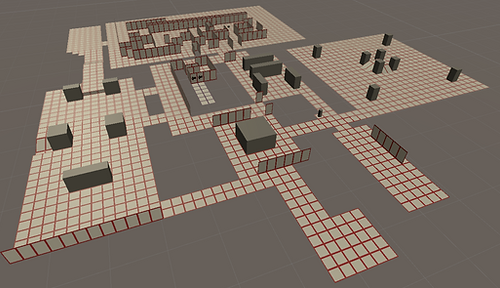
The main level's design after a single day of building. The resemblance to the final product is already starting to show in certain places.

Prototype
In-engine, the level was put together using tiles aligned in a grid.
I started adding prop blockouts to the scene to get a feel for where things would go throughout the map.
I also added placeholders for where I felt enemies and important items should go (as soon as they were made).
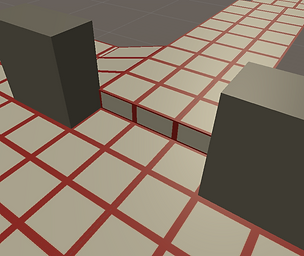
Things like slopes and ledges were eventually cut because gravity is a finnicky element to conquer.
Alpha
The Alpha stage of our project is where we began to apply custom textures to the game objects, starting with the walls and floor.
In addition to working on the main level, I had also begun setting up a layout for the tutorial level. I made a set of rooms that could easily be connected together, that way we could adjust the order that the players would experience the tutorial!
We were now able to finally throw in the enemy monsters, using the convenient developer tools the programmers made to set up their behavior.
I even got to help out with sound design by recording some foley sound effects!

I made the toybox "rummaging" sound by shuffling around a bunch of knick-knacks I own in a big pile.
I made the rollercoaster munching sound by hastily eating doritos.
The updated level layout, with colored markers

The tutorial level segments in their first iteration

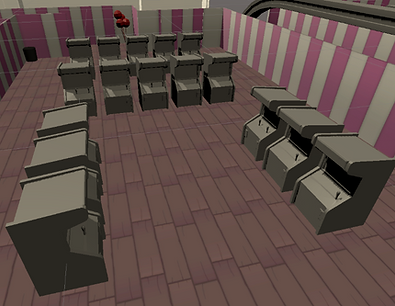
Detailed props start getting added!
Beta
At the beginning of the Beta phase, Kevin, Tristin, and I formed a "level design strike force", and looked over all of the levels' rooms and deliberated on changes that needed to be made.
Most of the changes were small, such as moving small objects, but some of the changes required removing or redesigning entire rooms.
Lots of polish was added during the beta phase, including detailed props, refined AI, and a set of black "roof tiles" that I helped put over the edges of the map, so the outside of the map appeared to be a sheer abyss.
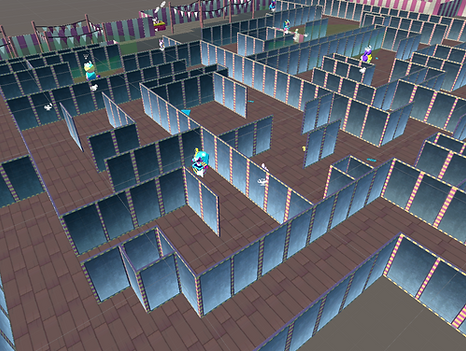
The hall of mirrors has actual mirror textures now!

A set of "roof tiles" covers the players' sight of anything outside the level
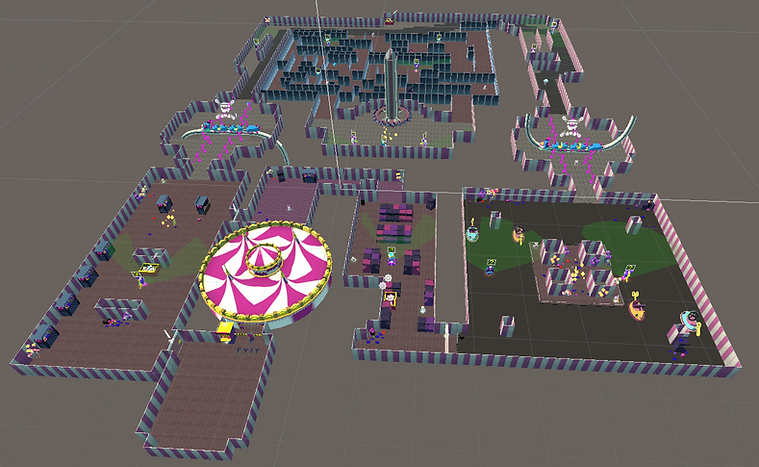
The final layout of the main level
Release
I learned a lot from this project, especially in the realm of level design. Every part of a level should have meaning, it's own contribution to the player experience. And through my work with Team Quail, I have not only gotten better at crafting those experiences, but also at balancing and reshaping my work.
Working on Lost Circus was a delight, and I thank my teammates who all pitched in an enormous effort to make the game as good as it can be.
